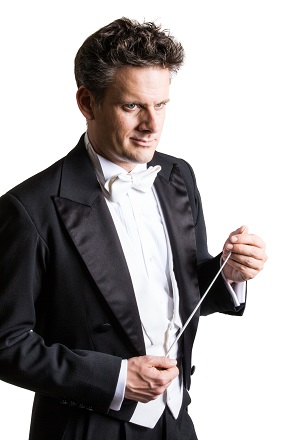 Switzerland Brahms: Julia Fischer (violin), Vienna Symphony Orchestra / Philippe Jordan (conductor), Tonhalle Maag, Zurich, 6.10.2019. (JR)
Switzerland Brahms: Julia Fischer (violin), Vienna Symphony Orchestra / Philippe Jordan (conductor), Tonhalle Maag, Zurich, 6.10.2019. (JR)

Brahms – Violin Concerto in D Op.77; Symphony No.4 in E minor Op.98
The Vienna Symphony Orchestra has been on tour in Switzerland (Bern, Geneva, Zurich) with an all-Brahms programme and they have left local audiences with a fine impression. The concert series was the opening of the Migros Kulturprozent Classics series this season and made for an utterly splendid start.
Before the orchestra came on stage, however, there was an opportunity for a young Swiss musician to play some short solos as part of the Migros Kulturprozent Classics scheme (‘Our stars of tomorrow’) to encourage (and finance) young Swiss talent. Not only do they receive funding, they also get the chance to appear on stage in front of a sizeable audience. The best of the crop will be invited to be a soloist in a concerto next season. Cellist Christoph Croisé was only 17 when he played at Carnegie Hall and has since played at major venues with major orchestras. He performed, to great audience acclaim, two short contemporary, entertaining pieces, Alone by Italian composer Giovanni Sollima, full of fast and furious slides and double-stopping, and the more jazzy, tango-imbued Stonehenge by Hungarian composer Péter Pejtsik. Croisé has considerable talent and formidable technique and will doubtlessly be a name to watch.
Zurich-born Philippe Jordan is always welcomed warmly by Swiss audiences; he is the son of Armin Jordan, a native of Lucerne, who was at the helm of the Orchestre de la Suisse Romande in Geneva for many years. Philippe Jordan will relinquish the chief conductorship of the Vienna Symphony at the end of the season to take up the reins of the Vienna State Opera; his place will be taken by Andrés Orozco-Estrada.
The VSO, founded in 1900, has had some illustrious chief conductors in its time, including Karajan, Sawallisch, Giulini and Prêtre. They played at the première of Bruckner’s Ninth Symphony (in 1903) and Ravel’s Piano Concerto for the left hand in D major in 1932. The orchestra may not be on a par with the Vienna Philharmonic, but they compare very favourably indeed with many a middle-ranking orchestra. With Philippe Jordan on the podium, they made a splendid impression.
Julia Fischer as soloist in the Brahms concerto was entirely relaxed and simply perfection. Warm tone, unshowy but stunning technique, secure intonation and a firm understanding of the shape of the music all combined to keep the audience’s attention rapt as the concerto unfolded. Jordan was a sensitive accompanist and never let the tempo drag. The principal oboe rendered his solo beautifully in the slow movement; the performance was a pleasure throughout. Fischer rewarded us with Paganini’s Caprice No. 24 with its sparkling pizzicato and tricky harmonics. (Paganini wrote 24 Caprices in all, but the last one is the most often played.)
Brahms’s Fourth Symphony was awarded playing of the highest order and Jordan was especially impressive, continually giving the most detailed dynamics and entry signals around the orchestra. He nurtured each phrase with a cupped hand and was a power-house of vitality. There was ample urgency and Brahmsian weight; every section of the orchestra showed off their skills, the sound as a whole well blended. Jordan placed the triangle well forward for the Scherzo (Allegro giocoso), to good effect. He allowed the final movement to breathe, and his command of the slow build-up to the final climax was palpable.
What encore could we expect? A rumbustious Brahms Hungarian Dance, of course. And as if that was not enough, a second encore, something Viennese, Johann Strauss II’s delightful Pizzicato Polka.
John Rhodes